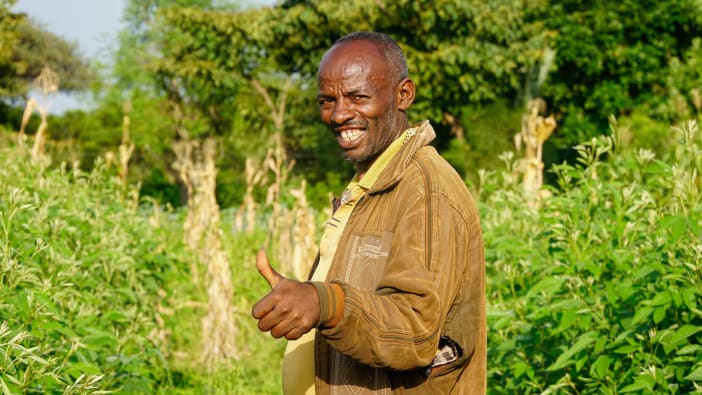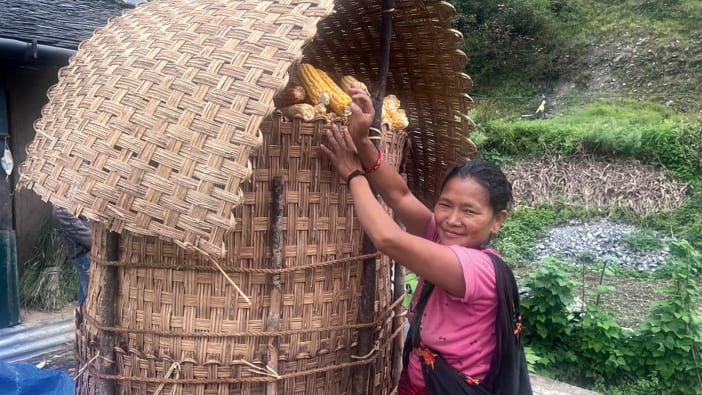by Mike Carter.
Many smallholder farmers are short of land. They may want to keep livestock because animals provide security, but are unable to do so because they do not have enough land for large animals. One solution to this is to raise goats in pens and to grow fodder to feed them.
For example, in Nigeria, some farmers are keeping goats permanently in houses raised about 60cm above the ground. Bamboo, split poles and thatching grass are used as building materials. The floors are slatted and made of wood or bamboo, with about 2cm between slats to allow urine and dung to fall through. The houses are built in sunny sites, sheltered from the wind. Feed racks are made outside the house under the shelter of the roof.
For feeding the goats, intensive fodder gardens are grown. Goats like variety in their diet. They need plenty of fresh, clean fodder each day.
Fodder gardens are grown on whatever land is available; it may be a plot next to the goat house; or waste land, field edges and soil conservation ridges may be planted. Manure from underneath the goat houses is used to dig into the garden soil to improve fertility. A wide variety of plants are grown including trees, shrubs and grasses. Legume plants or trees are particularly valuable because their leaves are generally high in protein. They also help to improve the soil.
Goats can live on the water they find in leaves, but they will do better if clean water is always available. This is especially important for milking goats.
Females which are pregnant or lactating will raise healthier kids if their diet is nutritious. You may be able to buy commercial concentrates locally. If not, here is an example of a concentrate mixture you could make yourself:
rice bran 5 tins
crushed maize (only if available) 3 tins
copra meal or groundnut cake 1 tin salt 1/10 tin
Feed these to your female goats twice a day.









